France’s Leclerc Tank

Along with the UK, France was among the earliest pioneers of tank development. The French Army’s General Jean-Baptiste Eugène Estienne is even considered the “Father of French Tanks” for his contributions that led to the Renault FT during the First World War. Yet, despite being the earliest innovators of tank design, France also faced challenges in keeping pace with the advancements of other nations, notably Germany, before the Second World War, and then the Soviet Union during the Cold War.
In an unlikely turn of events, just a few decades earlier, France opted to develop a tank with its former adversary jointly. However, after the Franco-German program stalled in the early 1960s, France proceeded to develop the AMX-30 independently.
That design put greater focus on speed and maneuverability over armor. It wasn’t considered a winning combination, as it was under-protected compared to the other tanks of the era, and was deemed essentially technically obsolete from its introduction. However, lessons learned from the AMX-30 program, as well as the development of more modern tanks, including Germany’s Leopard 1 and the Soviet T-72, allowed France to reconsider the capabilities required for the modern battlefield.
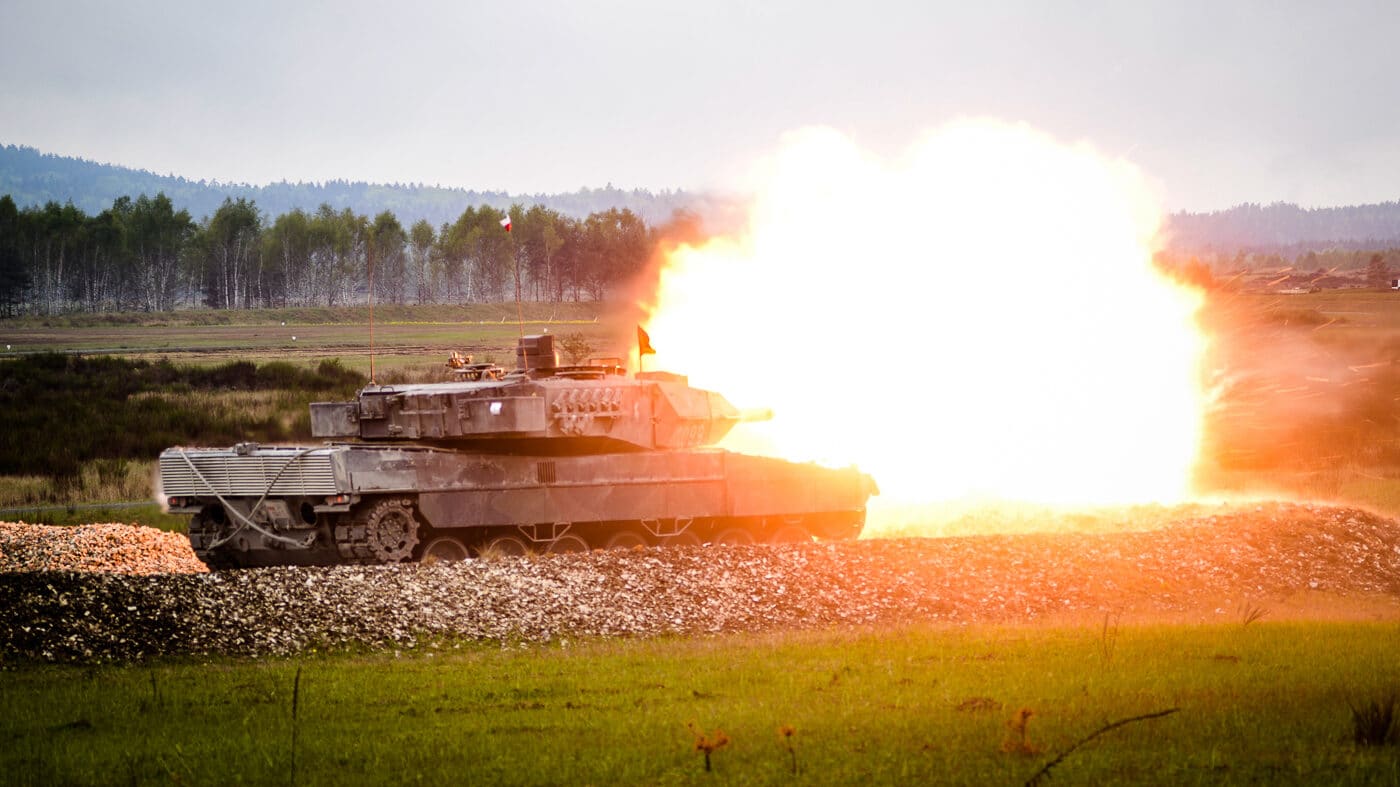
That led to the development of the Leclerc, a main battle tank (MBT) that was seen as comparable in performance and capabilities to those of France’s NATO partners. It also offered advancements, notably an autoloader, not seen in other NATO tanks.
A Product of the 1980s
In the late 1970s, Paris and Bonn — the capital of West Germany — once again sought to co-develop a new Main Battle Tank (MBT) to replace the AMX-30 and the Leopard 1, respectively. The eventual armored vehicle was to be named the Napoléon I in French military service and the Kampfpanzer 3 for Germany’s Bundeswehr. However, the former adversaries failed to reach an agreement on the confirmation, and the project collapsed in December 1982.
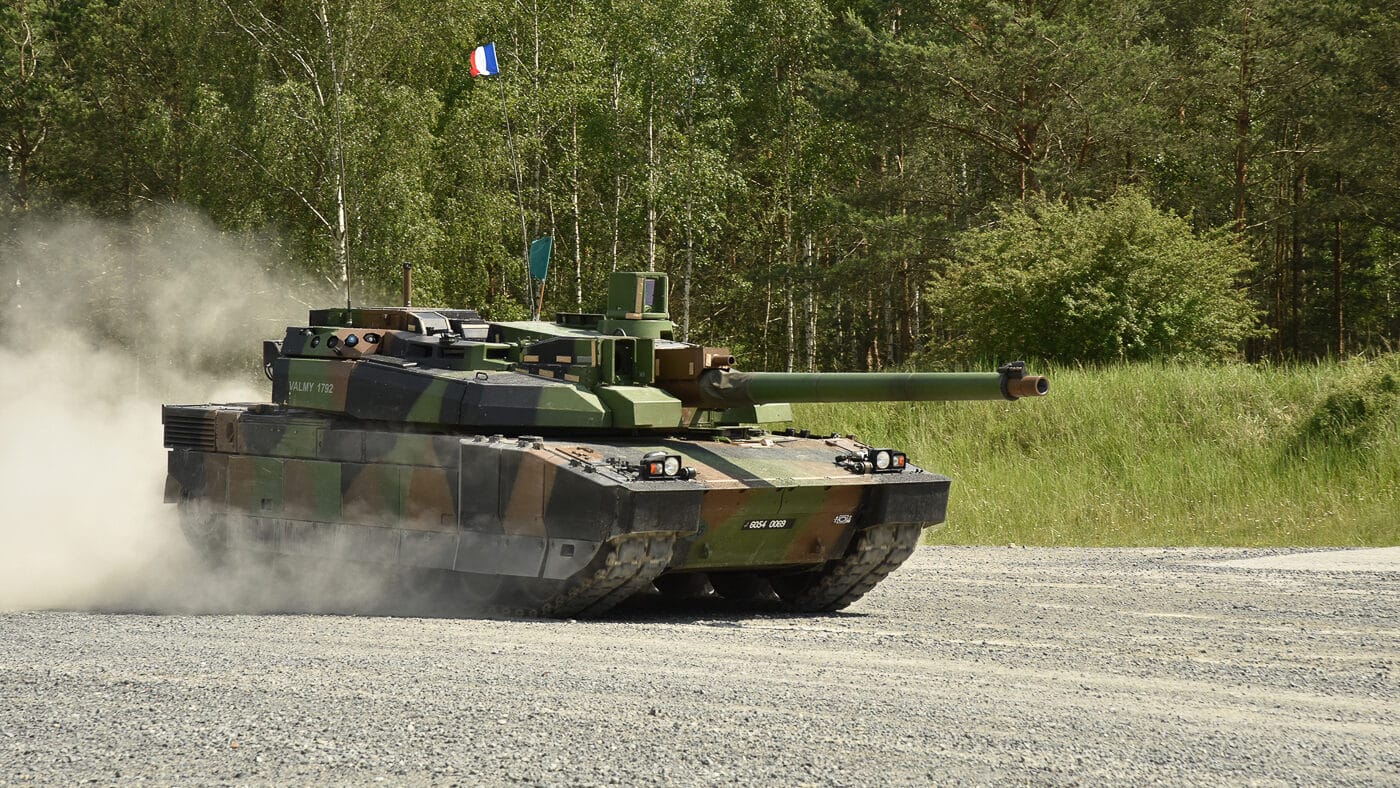
Just months later, Paris initiated the “Engin Principal de Combat” (EPC) program to field a new tank, and development continued through the 1980s. In true French fashion, the early prototypes introduced in 1983 were declared the “first third-generation MBT,” although armor historians have noted that other third-generation tanks were already in service.
When it entered service in 1992, the MBT was named the Leclerc, in honor of Marshal Philippe Leclerc de Hauteclocque, commander of the Free French Forces’ 2nd Armored Division in World War II, who received the surrender of the German occupiers of Paris in 1944.
France’s Modern MBT
The Leclerc’s design was similar to Western MBTs, with a hull and turret constructed of welded steel. Modular segments of composite armor were added to provide further protection from kinetic and chemical rounds. Though the prototype turret featured an angular design, production models sported a long, low turret that is considered to offer excellent anti-ballistic attributes.
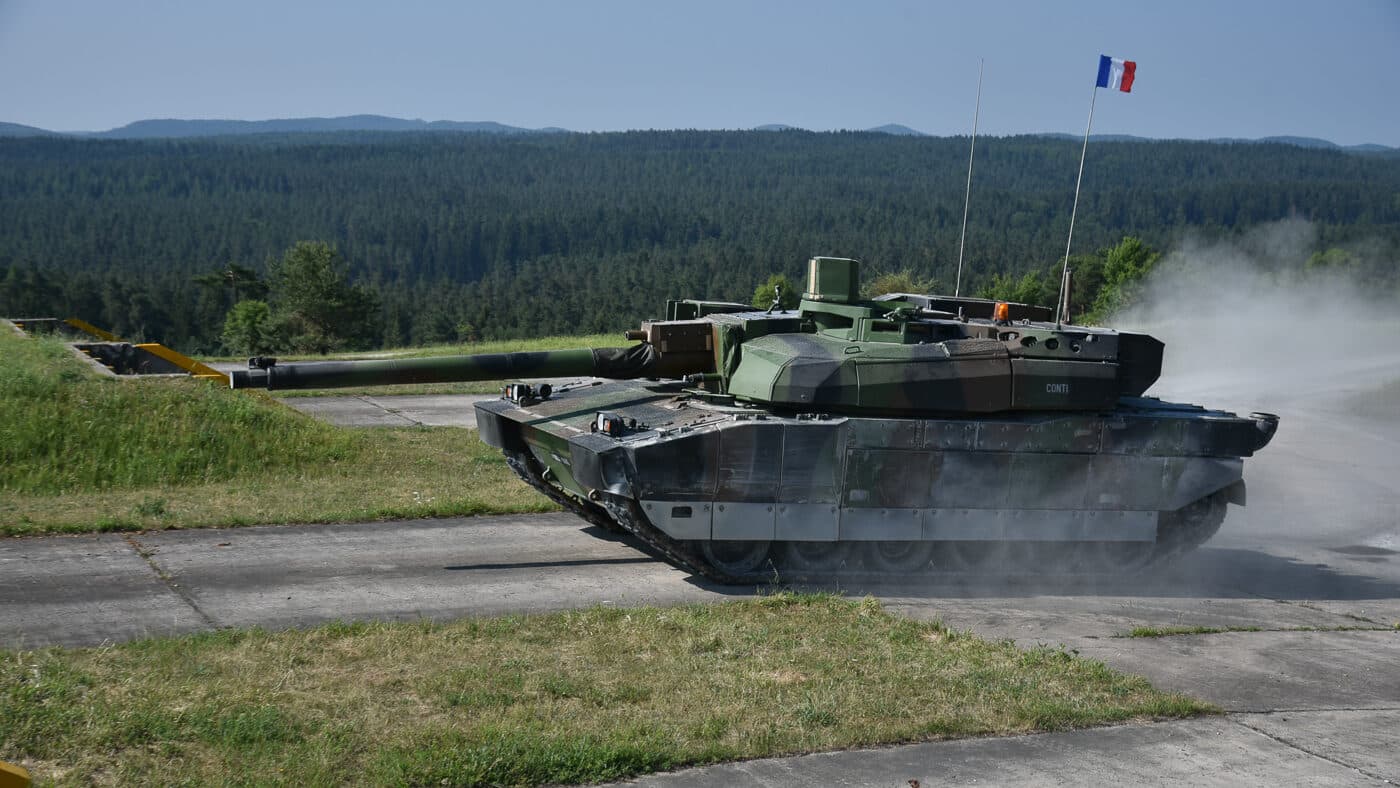
Speed and maneuverability were again integral to France’s armored doctrine, with the Leclerc powered by a SACM V8 turbocharged high-pressure diesel engine that provided 1,500 hp via an automatic hydrostatic transmission. Even as the third-gen MBT was more heavily armored than the AMX-30, the Leclerc could reach a speed of 45.6 mph (73 km/h) on the road and could go from rest to 20mph (32km/h) in under six seconds.
The production Leclerc was also notably smaller than its contemporaries, nearly a full meter (39 inches) shorter than the Leopard 2 and two meters (six and a half feet) shorter than the British Challenger. All the tanks were roughly the same in width; however, this resulted in the French tank’s length-to-width ratio offering better stability and maneuverability.
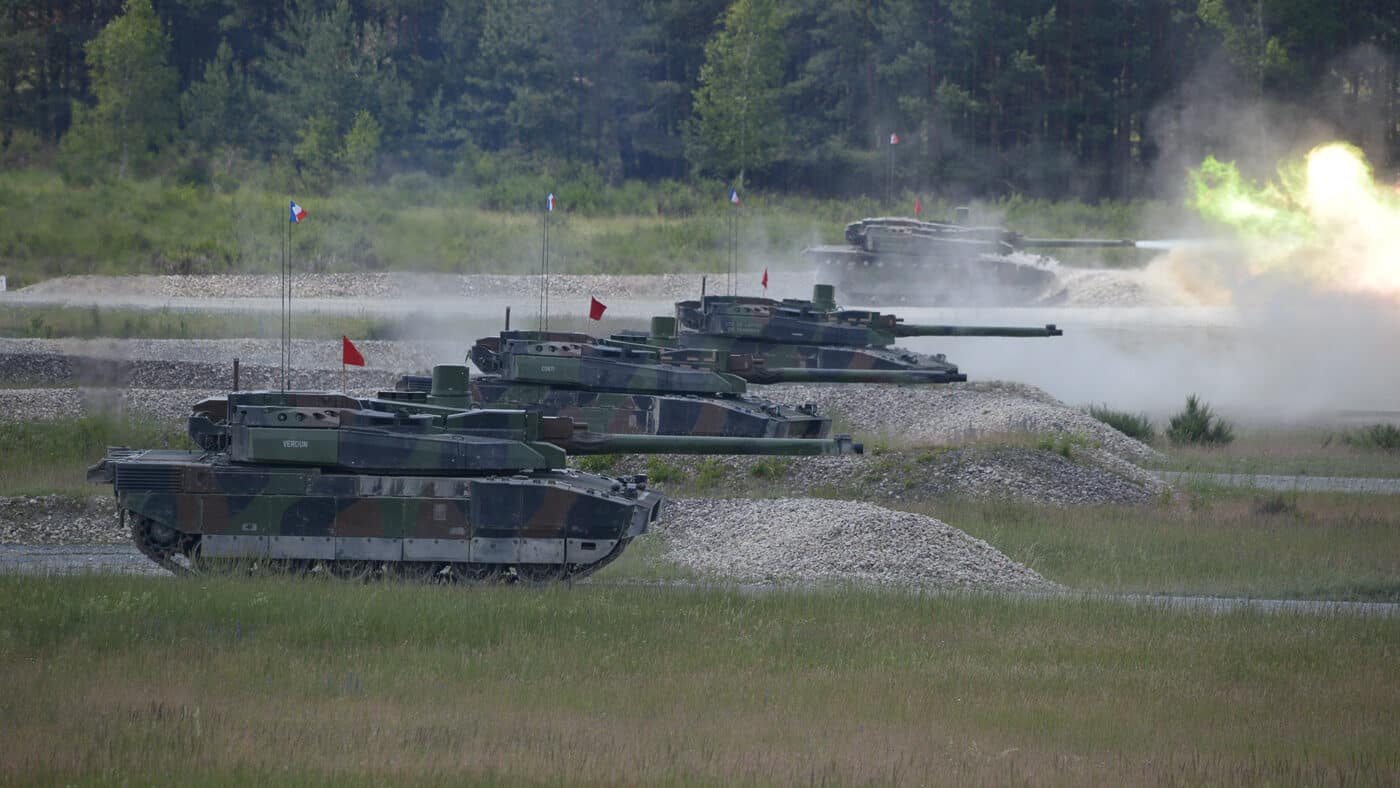
The Leclerc’s smaller size meant the crew had very little internal storage, and there were virtually no provisions for carrying external gear or equipment. However, unlike the Leopard 2 and Challenger (and even the American M1 Abrams), which require a crew of four, the Leclerc is operated by a crew of three, a point that will be addressed.
Big Gun, Small Tank
What is instantly notable about the squat tank is the length of its gun, especially when compared to the aforementioned Leopard 2 and Challenger MBTs.
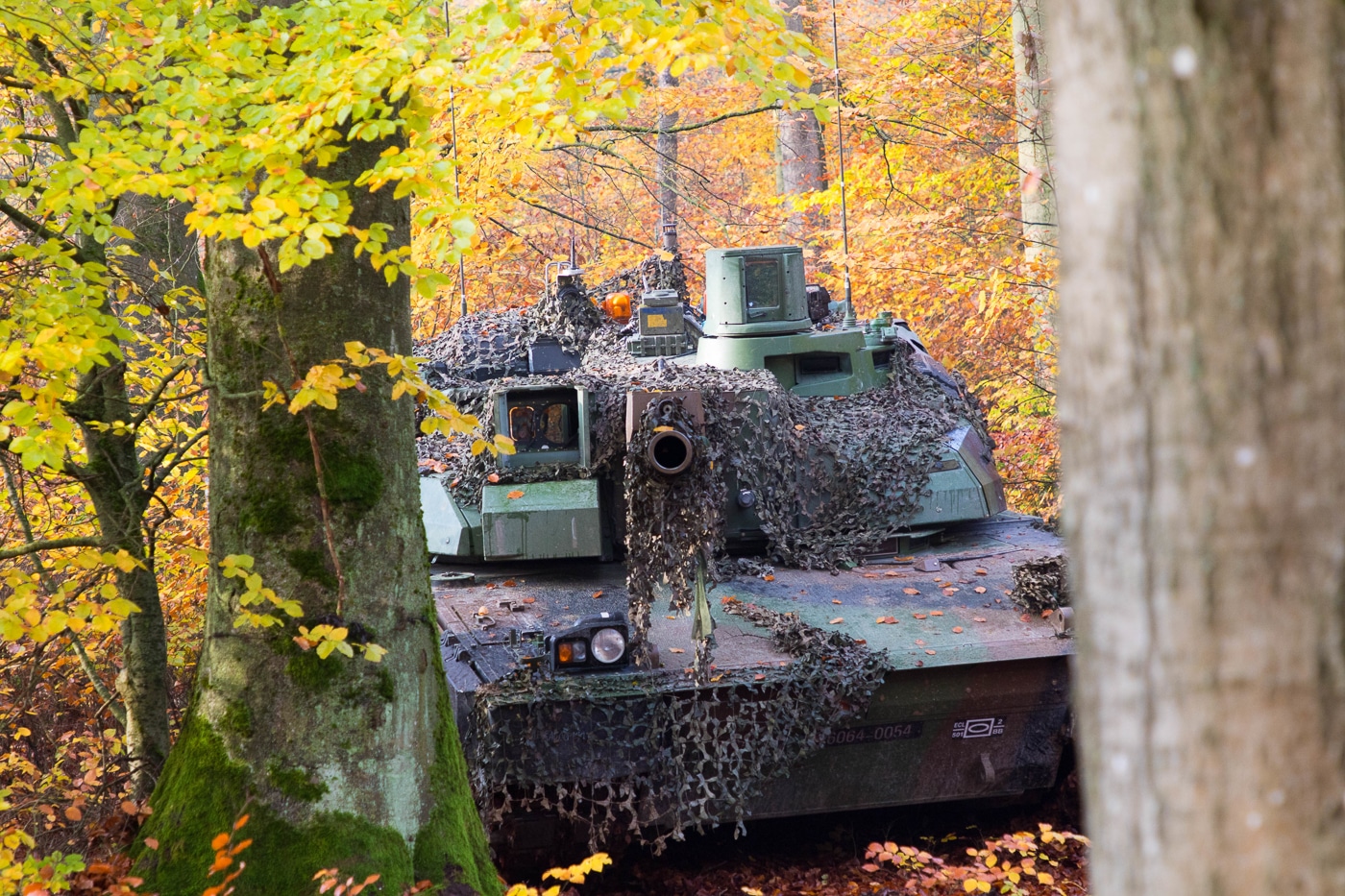
The GIAT 120mm smoothbore, fully stabilized main gun, which was the same caliber as the German Rheinmetall gun to ensure commonality of ordnance among NATO partners, utilized a longer tube, providing a higher muzzle velocity to the projectiles. A compressed air system expelled fumes automatically after firing. In addition, the French tank was outfitted with an autoloader, which resulted in the aforementioned reduced crew size, with just the commander and gunner seated in the turret.
The automatic loader’s magazine was designed to hold 22 rounds of ready-use ammunition, mounted in the turret bustle, while also separated from the fighting compartment by a bulkhead. In addition, a “blow-out” panel was placed in the roof to direct any resulting explosion up and away from the crew and powerplant should the MBT take a direct hit. That has largely addressed the so-called “Jack-in-the-Box” problem that has plagued Soviet/Russian-designed tanks outfitted with autoloaders.
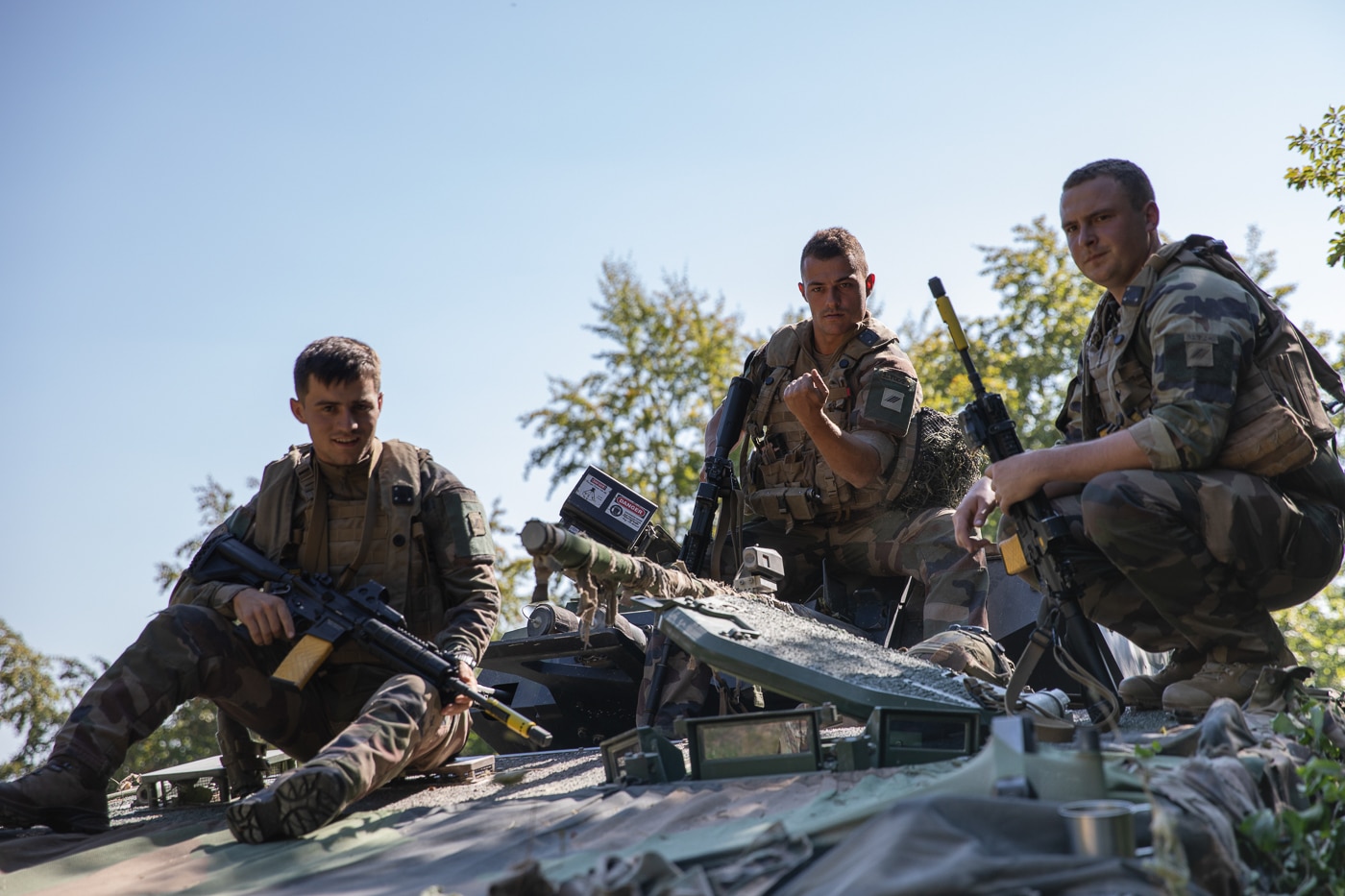
The autoloader has proven to be more capable than the one developed in the Soviet Union.
The type of rounds made ready to fire could be selected by the gunner, with up to six different ammunition types held in the magazine. The computerized system further enabled a rate of fire of 10 rounds per minute. In addition to the 22 rounds in the automatic loader, extra ammunition could be stored in a compartment in the hull.
The Leclerc’s turret was also designed to be retrofitted with a 140mm gun, should the need arise. However, such a modification would likely reduce the already limited internal space in the turret.
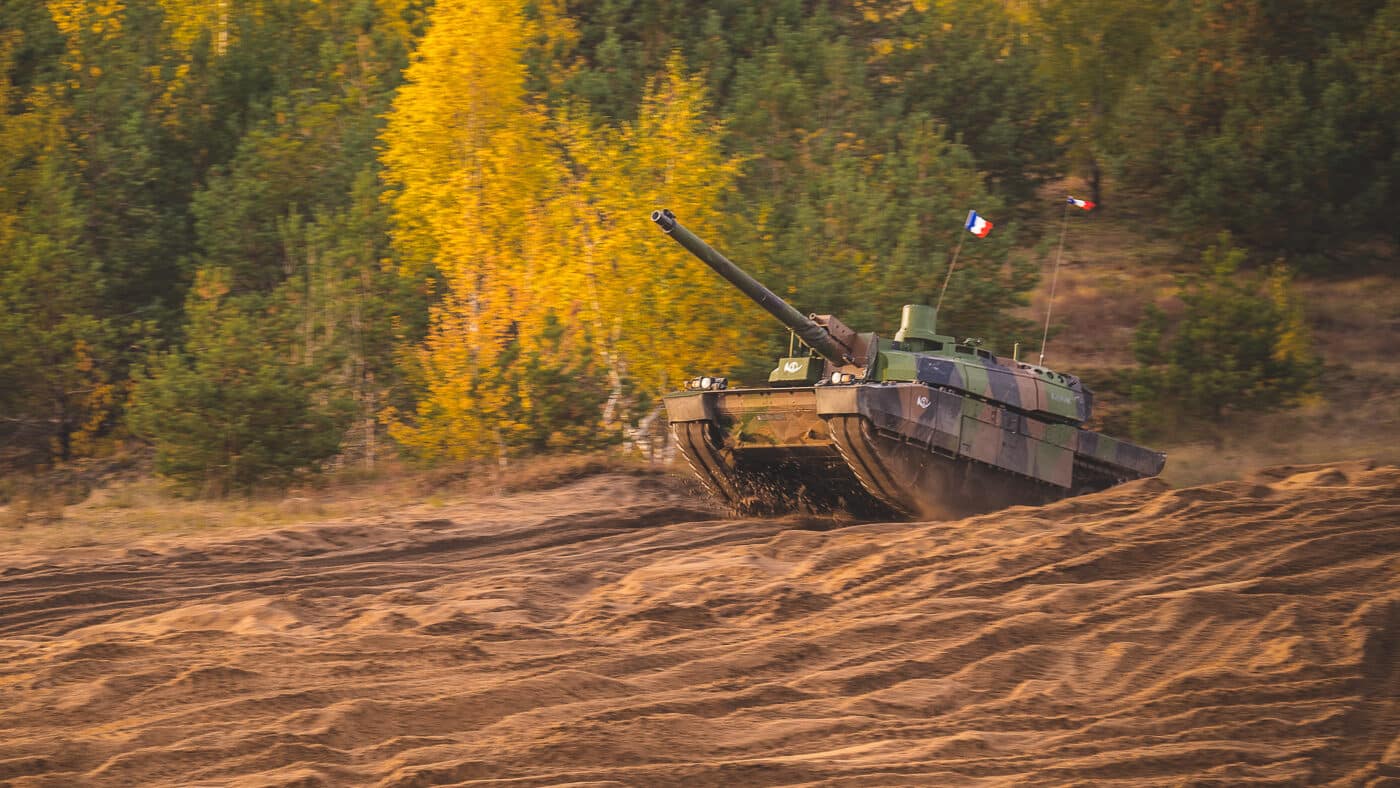
Secondary armament of the Leclerc consisted of a 12.7mm coaxial machine gun (a ma deuce .50 cal, of course), while a 7.62mm machine gun mounted on the turret roof could also be remotely controlled. The tank was further outfitted with nine-barreled smoke grenade dischargers.
The tank’s commander was provided with a panoramic sight that incorporates a laser rangefinder and an image intensifier, while the gunner’s sight was noted to feature a thermal imager. The Leclerc was also equipped with a FINDERS battle management system, which features visual display units (VDUs) to provide the crew with a colored map display, allowing the projection of the disposition of allied and enemy forces.
Modernized Leclerc
France has taken the same efforts to update and modernize its Leclerc MBT as the United States has with the M1 Abrams and Germany with its Leopard 2. In the case of the French effort, this has resulted in the Leclerc XLR, which features enhanced communications systems, upgraded crew safety measures, and improved mobility and protection.
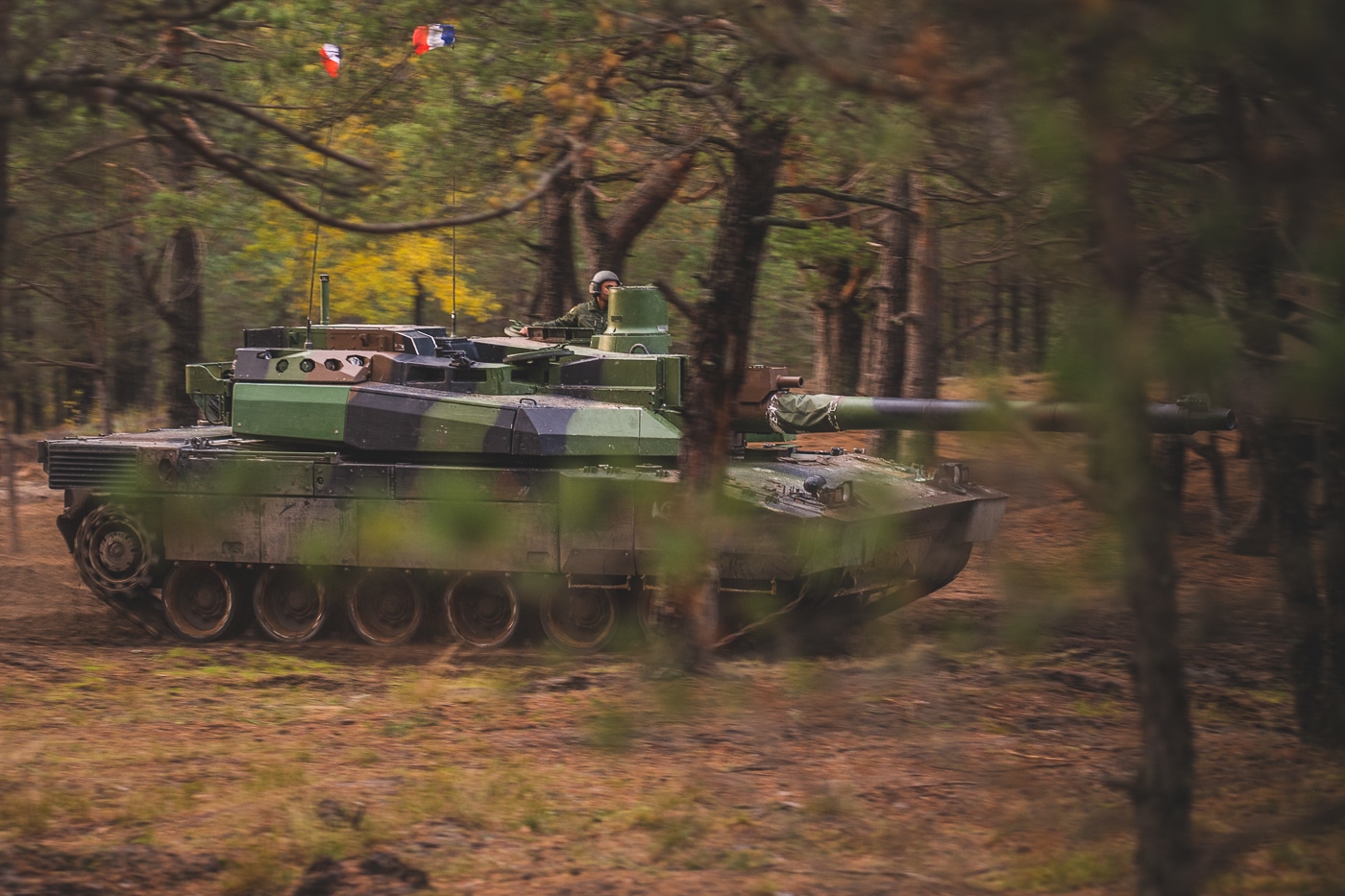
Much of the upgrade has focused on onboard sensors, which include electronic warfare (EW) jammers, and a new generation of panoramic sight that will enhance targeting capabilities in both day and night conditions. The enhancements have included new modular protection kits on the tank’s flanks and underneath armor to improve the survivability for the crew from improvised explosive devices (IEDs), mines, and man-portable anti-tank guided-missile (ATGM) rocket-launchers. The new EW countermeasures were further introduced to address threats from counter drones and other unmanned aerial systems (UAS).
The Leclerc XLR upgrade would also ensure compatibility with the SCORPION real-time tactical data network, allowing it to exchange data with other vehicles outfitted with that system, including the Griffon, Jaguar and Serval.
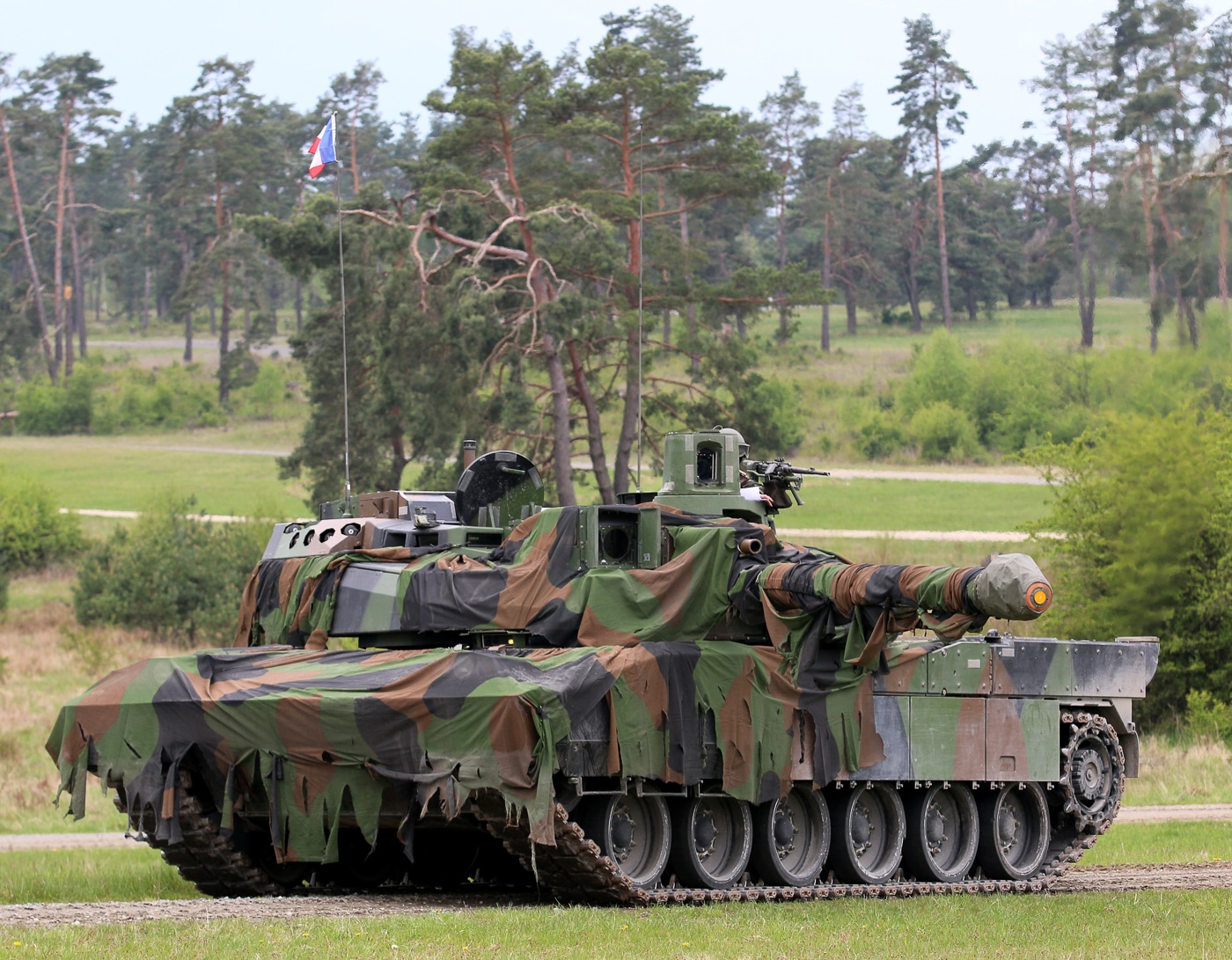
The French Army received the first two XLR variants in June 2023, and current plans call for 200 of the 215 Leclerc MBTs now in service to undergo modernization, with 160 to be completed by 2030 and the remainder by 2035. It has been unclear whether the additional 184 units maintained in storage will also receive the upgrade at a later date.
The goal of the XLR upgrade has been to keep the MBT in service until at least the early 2040s.
That will be when the Franco-German “Main Combat System of the Future” (MGCS), which calls for the development of a “system of systems” of ground combat vehicles including manned and unmanned platforms, enters service. Although past collaboration efforts between Paris and Berlin collapsed and resulted in the two nations developing new tanks independently, the MGCS program remains well on track.
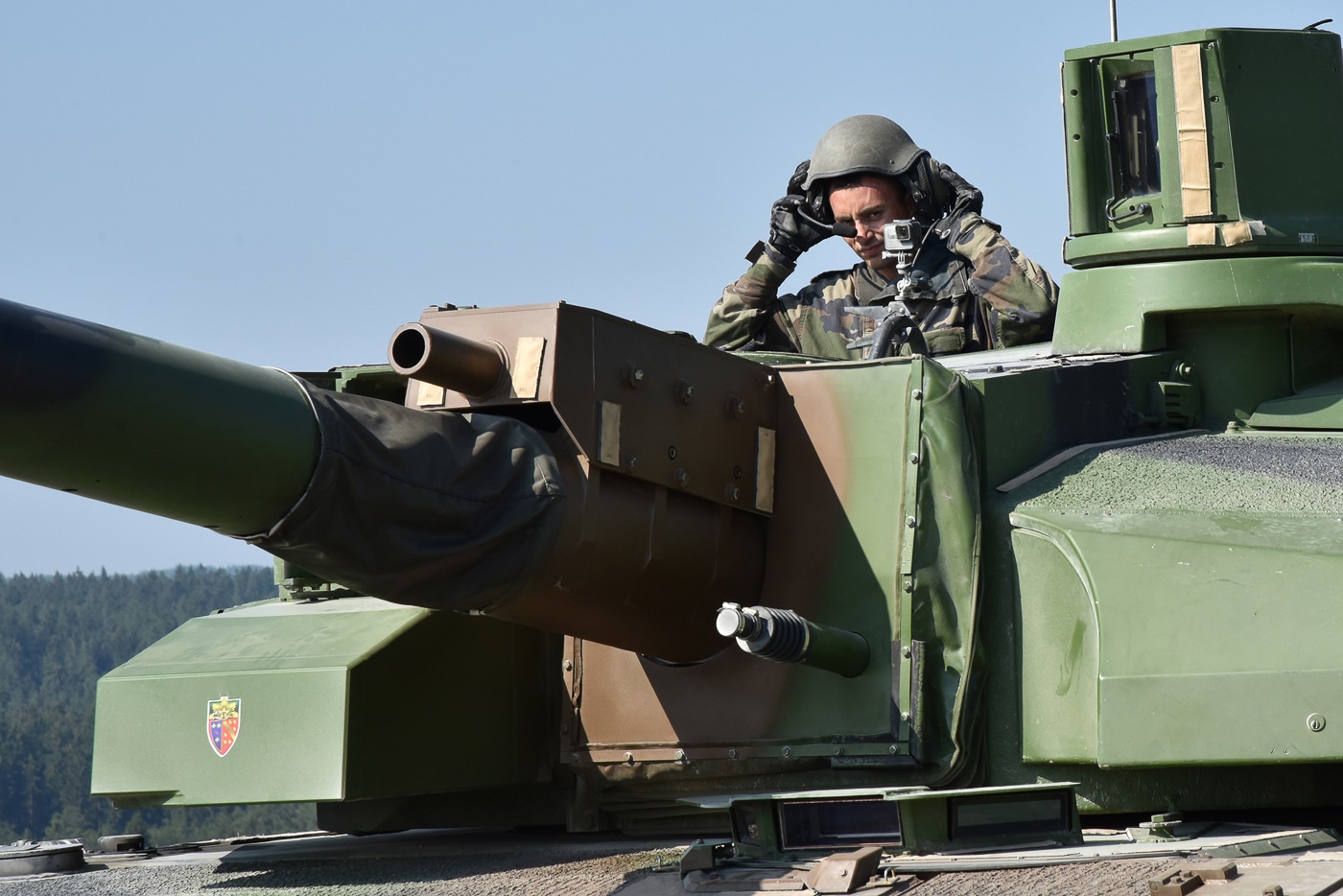
However, Paris is likely being cautious that it may need the most capable MBT in service in the meantime, and it isn’t alone in that fact. NATO member Croatia has reached out to France about a possible acquisition of the Leclerc XLR, while India has also expressed interest in the MBT to replace its aging fleet of Soviet-made armor.
The Leclerc in Service
Although it entered service in 1992, the Leclerc has been deployed to date only in “low-intensity conflicts” with the French military. That included around 15 that were deployed to Kosovo as part of the NATO-led Kosovo Force (KFOR), which began its peacekeeping mission in 1999, while a dozen were part of the United Nations Interim Force in Lebanon (UNIFIL) peacekeeping operations in the Middle Eastern nation until 2010. French officials have reportedly been satisfied with how the tanks have performed in those missions.
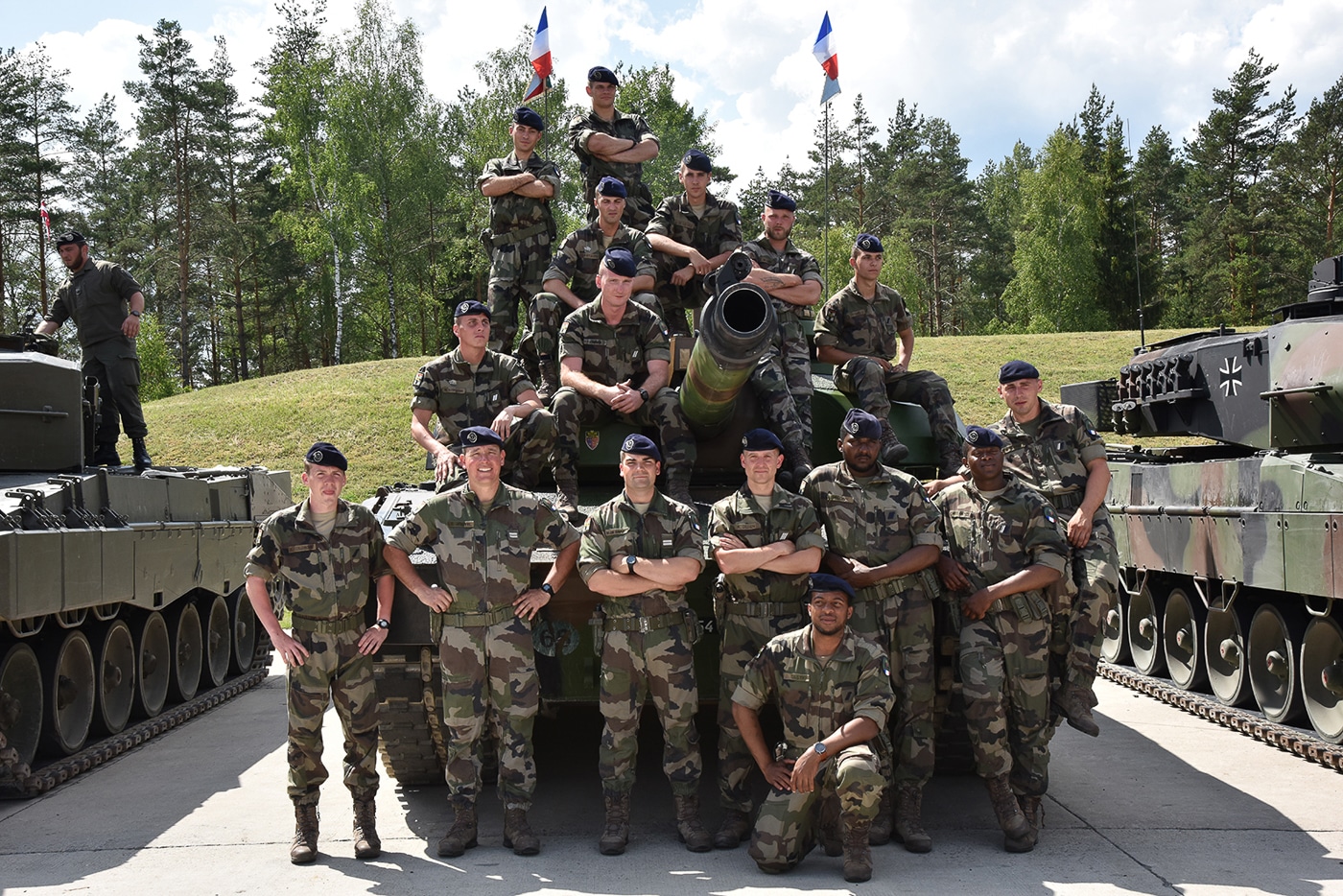
The only confirmed combat operation involving the Leclerc is with the MBTs operated by the United Arab Emirates’ (UAE) military as part of the Saudi-led coalition against the Iranian-backed Houthi militants. Its combat record has been outstanding.
Though multiple tanks were damaged in the fighting and one driver was killed in December 2016 after his MBT took a hit from an ATGM, now, of the approximately 70 French-made tanks deployed to Yemen, none have been destroyed.
Finally, Paris has touted the idea of supplying some of the Leclerc tanks to Ukraine, yet none have been sent to date. It is possible that France would want to send upgraded XLR models. The ongoing conflict, which has put into question the future of tanks on the battlefield, could serve as a good testbed for the MBT’s upgrades and enhancements, and answer the outstanding question of whether the Leclerc will remain a viable war machine for another 15 or more years.
Editor’s Note: Please be sure to check out The Armory Life Forum, where you can comment about our daily articles, as well as just talk guns and gear. Click the “Go To Forum Thread” link below to jump in and discuss this article and much more!
Join the Discussion
Read the full article here









